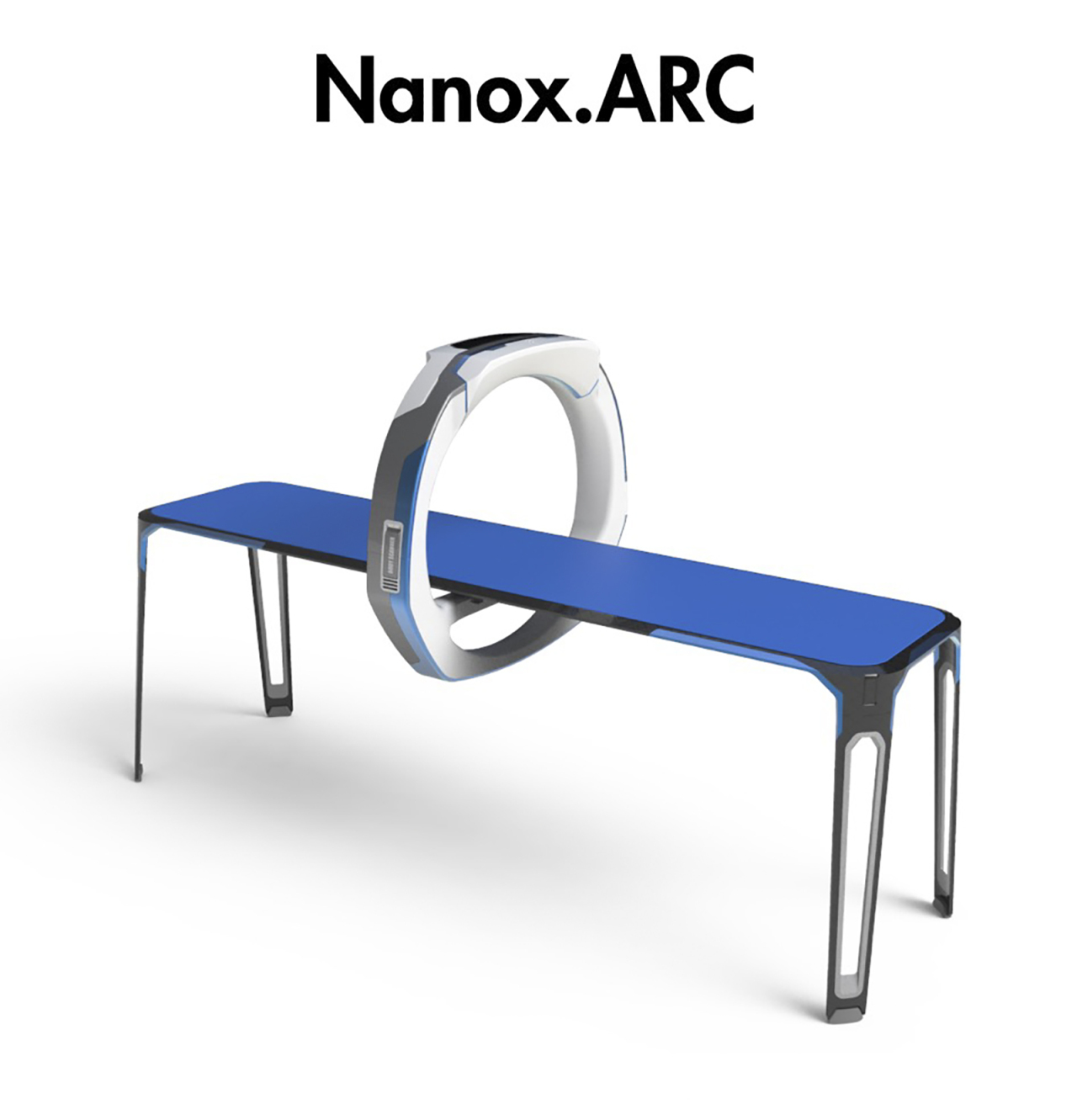
Korean telecommunications firm SK Telecom is tapping the future of digitalized medical imaging by channeling semiconductor and 5G network services.
SKT announced Friday that the company has become the second-biggest shareholder of Israeli medical imaging firm Nanox, which is preparing to make an initial public offering on the US tech-heavy Nasdaq bourse, by participating in a pre-IPO deal.
The Korean mobile carrier has invested an accumulated $23 million in Nanox, earning exclusive business rights for the digital X-ray in Korea and Vietnam. SKT will build a brand new manufacturing site in Korea for the medical device, it said.
Nanox’s digital X-ray technology boasts advanced picture quality and radioactive safety in comparison to analog X-ray, SKT said, adding that it is an innovation on par with the light-emitting diode.
The device can be hooked into the 5G network and cloud services, and is light enough for use in an ambulance.
SK Telecom is devising an information and communication technology ecosystem focused on health care, comprising its semiconductor affiliate SK hynix, digital security systems affiliate ADT Caps and digital health care joint venture Invites Healthcare.
According to its vision, SKT will be able to connect emergency medical relief teams riding in ambulances with medical experts in hospitals to exchange high-resolution X-rays and CT images to provide more immediate treatment options for patients in a critical situation.
Market researchers Maketsandmarkets and Grandviewsearch predict the next-generation medical imaging device market will hit 45 trillion won ($37.3 billion) by 2026.
Global firms Fuji Film, Foxconn and Yozma Group have also invested in Nanox.
According to SKT, 125 years after the discovery of the X-ray, the technology will start going through an innovative makeover from analog to digital.
A conventional X-ray imaging device heats up filament made of copper and tungsten to 2,000 degrees Celsius, by which it produces electrons. It then shoots the electrons to a rapidly spinning anode, creating the X-ray. By exposing a subject to the X-ray for a certain period of time, an image can be retrieved.
Unlike the analog X-ray, Nanox’s digital X-ray uses a fingernail-sized silicon semiconductor to produce electrons and transform them. It skips the process of heating the filament and spinning the anode, by which it produces a scan 30 times faster.
In other words, Nanox’s digital X-ray reduces the time a person is exposed to radioactive rays to one-30th of the usual time. More dramatically, the cost of taking a scan using Nanox’s digital X-ray is 10 percent of conventional devices.
As the digital X-ray does not require a heavy cooling device that typically weighs about a ton -- it weighs 200 kilograms -- it can be put in ambulances.
Nanox’s digital X-ray and computerized tomography device, called Nanox.ARC, are concurrently going through the US Food and Drug Administration’s medical device approvals process and mass production preparation.
By Lim Jeong-yeo (kaylalim@heraldcorp.com)
SKT announced Friday that the company has become the second-biggest shareholder of Israeli medical imaging firm Nanox, which is preparing to make an initial public offering on the US tech-heavy Nasdaq bourse, by participating in a pre-IPO deal.
The Korean mobile carrier has invested an accumulated $23 million in Nanox, earning exclusive business rights for the digital X-ray in Korea and Vietnam. SKT will build a brand new manufacturing site in Korea for the medical device, it said.
Nanox’s digital X-ray technology boasts advanced picture quality and radioactive safety in comparison to analog X-ray, SKT said, adding that it is an innovation on par with the light-emitting diode.
The device can be hooked into the 5G network and cloud services, and is light enough for use in an ambulance.
SK Telecom is devising an information and communication technology ecosystem focused on health care, comprising its semiconductor affiliate SK hynix, digital security systems affiliate ADT Caps and digital health care joint venture Invites Healthcare.
According to its vision, SKT will be able to connect emergency medical relief teams riding in ambulances with medical experts in hospitals to exchange high-resolution X-rays and CT images to provide more immediate treatment options for patients in a critical situation.
Market researchers Maketsandmarkets and Grandviewsearch predict the next-generation medical imaging device market will hit 45 trillion won ($37.3 billion) by 2026.
Global firms Fuji Film, Foxconn and Yozma Group have also invested in Nanox.
According to SKT, 125 years after the discovery of the X-ray, the technology will start going through an innovative makeover from analog to digital.
A conventional X-ray imaging device heats up filament made of copper and tungsten to 2,000 degrees Celsius, by which it produces electrons. It then shoots the electrons to a rapidly spinning anode, creating the X-ray. By exposing a subject to the X-ray for a certain period of time, an image can be retrieved.
Unlike the analog X-ray, Nanox’s digital X-ray uses a fingernail-sized silicon semiconductor to produce electrons and transform them. It skips the process of heating the filament and spinning the anode, by which it produces a scan 30 times faster.
In other words, Nanox’s digital X-ray reduces the time a person is exposed to radioactive rays to one-30th of the usual time. More dramatically, the cost of taking a scan using Nanox’s digital X-ray is 10 percent of conventional devices.
As the digital X-ray does not require a heavy cooling device that typically weighs about a ton -- it weighs 200 kilograms -- it can be put in ambulances.
Nanox’s digital X-ray and computerized tomography device, called Nanox.ARC, are concurrently going through the US Food and Drug Administration’s medical device approvals process and mass production preparation.
By Lim Jeong-yeo (kaylalim@heraldcorp.com)


![[Herald Interview] 'Amid aging population, Korea to invite more young professionals from overseas'](http://res.heraldm.com/phpwas/restmb_idxmake.php?idx=644&simg=/content/image/2024/04/24/20240424050844_0.jpg&u=20240424200058)













![[KH Explains] Korean shipbuilding stocks rally: Real growth or bubble?](http://res.heraldm.com/phpwas/restmb_idxmake.php?idx=652&simg=/content/image/2024/04/25/20240425050656_0.jpg&u=)

